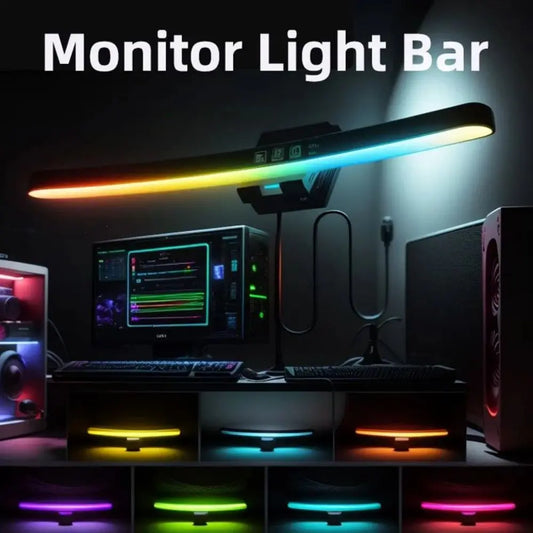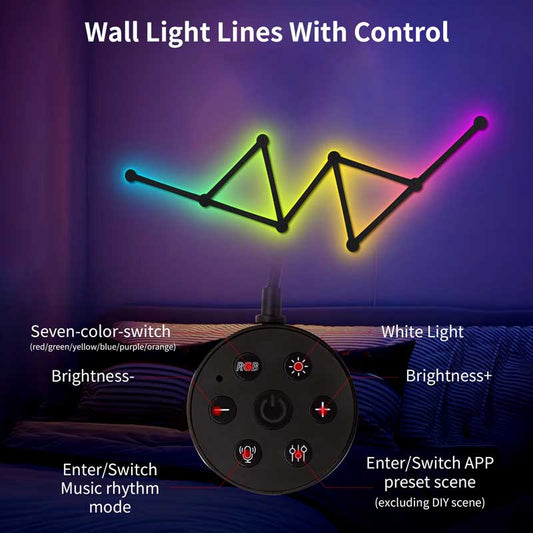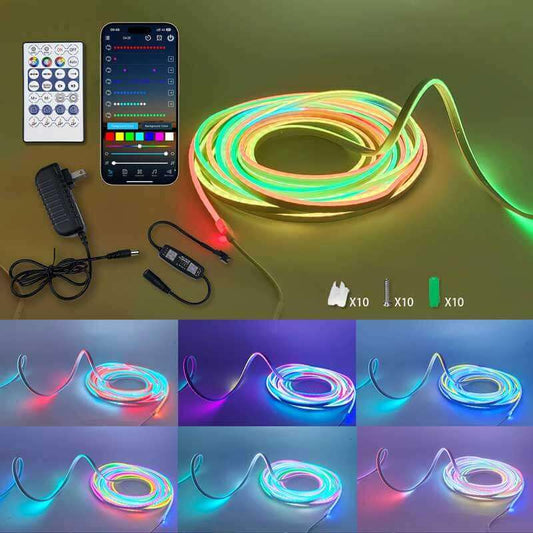How do battery outdoor lights work?
Share
Battery-powered outdoor lights are a convenient and flexible solution for illuminating outdoor spaces without the need for electrical outlets or wiring. These lights use batteries as their power source, and they are commonly used for garden lighting, path lights, accent lighting, and other outdoor lighting needs. Here's a breakdown of how battery-powered outdoor lights work, their advantages, and how to use them effectively:
How Battery-Powered Outdoor Lights Work
-
Power Source: Batteries
- Battery Types: Most outdoor battery-powered lights use AA, AAA, Li-ion, or rechargeable lithium-ion batteries. The type of battery used depends on the size, brightness, and intended use of the light.
- Battery Life: The battery life varies depending on the type of battery, the brightness of the light, and how often the light is used. Rechargeable batteries are commonly used in higher-end models because they can be charged multiple times and save on cost over time.
-
Light Source: LED Technology
- LEDs: Battery-powered outdoor lights typically use LEDs (Light Emitting Diodes) due to their energy efficiency, long lifespan, and bright light output. LEDs consume far less energy than traditional incandescent bulbs, allowing the battery to last longer.
- Brightness: While the brightness of battery-powered LED lights is generally lower than wired lights, they are still sufficient for outdoor use such as highlighting pathways, gardens, or accentuating decorative features.
-
Switching Mechanism: Manual or Automatic
- Manual Switch: Some lights have a simple on/off switch that allows you to turn the light on or off as needed. These are typically found in decorative lanterns or accent lights.
- Motion Sensors: Many outdoor battery-powered lights, especially security lights, come with motion sensors that turn the light on when they detect movement. This feature helps conserve battery power since the lights only turn on when needed.
- Dusk-to-Dawn Sensors: Other lights are equipped with light sensors that automatically turn the light on at dusk and off at dawn, making them ideal for continuous nighttime illumination without manual intervention.
-
Charging (for Rechargeable Battery Lights)
- Solar Rechargeable Lights: Some battery-powered outdoor lights can be charged using solar panels. These lights have a small solar panel that charges the battery during the day, allowing the light to operate at night. This is a popular option for garden lights, path lights, and accent lighting.
- USB Charging: Rechargeable LED lights may also come with a USB charging port, allowing you to recharge the batteries by plugging the light into a USB outlet (e.g., a power bank or wall adapter).
- Rechargeable Battery Packs: Some battery-powered lights have removable rechargeable battery packs. These packs can be charged separately and swapped out when needed.
Types of Battery-Powered Outdoor Lights
-
Garden Lights
- Function: Used to illuminate flower beds, shrubs, and other outdoor features. Often designed to be installed in the ground along pathways or in garden beds.
- How They Work: These lights usually come with a set of small batteries (like AA or AAA), and are typically low-wattage LED lights, allowing them to run for extended periods.
-
Pathway Lights
- Function: Placed along walkways or garden paths to provide visibility and enhance landscaping.
- How They Work: These lights are usually powered by AA or rechargeable batteries and may feature a simple on/off switch or an automatic dusk-to-dawn sensor.
-
Flood Lights
- Function: Used to provide broad, intense lighting over a large area. These are ideal for security purposes or illuminating large garden areas.
- How They Work: Larger battery packs, typically rechargeable, power the floodlight. Some models include motion sensors or remote control features.
-
Lanterns and String Lights
- Function: Decorative lighting for patios, decks, or garden events. These lights often come in the form of lanterns, hanging lights, or string lights for a festive or cozy atmosphere.
- How They Work: These are often powered by AA or rechargeable batteries and are designed to be portable, lightweight, and easy to move around.
-
Security Lights
- Function: Battery-powered security lights with motion detection, which automatically turn on when they sense movement.
- How They Work: These lights typically use high-brightness LEDs and may be powered by rechargeable batteries or larger battery packs to ensure long-lasting performance.
-
Spotlights
- Function: Used for highlighting specific outdoor features such as statues, trees, or fountains.
- How They Work: These lights are often more powerful and use rechargeable batteries for extended performance, providing concentrated lighting in specific areas.
Advantages of Battery-Powered Outdoor Lights
-
No Need for Electrical Outlets
- The most significant advantage is the ability to install lighting anywhere outdoors without needing a nearby electrical outlet or running wiring.
-
Flexibility and Portability
- Battery-powered lights are often portable, allowing you to move them around as needed, whether for temporary events, seasonal decoration, or changing outdoor layouts.
-
Easy Installation
- Most battery-powered lights require minimal installation. You can set them up in minutes without the need for professional help or tools.
-
Eco-Friendly Options
- Solar-powered battery lights are especially eco-friendly since they harness solar energy and reduce dependence on the grid.
-
Lower Energy Consumption
- Battery-powered LED lights consume less energy than traditional lighting, making them cost-effective and efficient for long-term use.
Disadvantages of Battery-Powered Outdoor Lights
-
Battery Replacement or Charging
- Batteries will eventually need to be replaced or recharged. Rechargeable lights need periodic charging, which may be inconvenient if not regularly maintained.
-
Limited Brightness
- Since the lights rely on batteries, they tend to have less brightness compared to wired electric lights. They are best for decorative purposes or low-level lighting.
-
Limited Runtime
- Depending on the battery type and usage, the lights may not run all night long. Some lights may need to be recharged or have their batteries replaced after several days or weeks of use.
-
Weather Sensitivity
- While many battery-powered outdoor lights are weatherproof, extreme temperatures can affect battery life and performance.
How to Maximize Battery Life
- Use Energy-Efficient LEDs: Ensure your outdoor lights use LEDs, as they consume less power and last longer.
- Install Solar-Powered Models: If possible, choose solar-powered lights that charge during the day and provide nighttime illumination without additional battery use.
- Limit Continuous Use: Use motion sensors or timers to ensure that lights are only on when needed, preserving battery life.
- Use High-Quality Rechargeable Batteries: If using rechargeable models, choose high-quality batteries that last longer and have a higher capacity.
Example Products
- LITOM Solar Lights – Solar-powered lights that feature wide coverage for gardens, fences, and walls.
- Ring Floodlight Cam – Battery-powered security camera with floodlight, great for outdoor surveillance.
- AMIR Motion Sensor Lights – Battery-powered motion sensor LED lights for security and convenience.
Battery-powered outdoor lights offer a practical solution for anyone looking to enhance their outdoor spaces without the hassle of wiring or electrical outlets. Whether you’re aiming for beautiful garden lighting, enhanced security, or a cozy outdoor atmosphere, battery-powered lights are a versatile and efficient option for many outdoor lighting needs




